Being immersed in the fitness industry provides me with a ton of different opportunities to experience different techniques, methodologies, and products. I recently had the privilege of a...
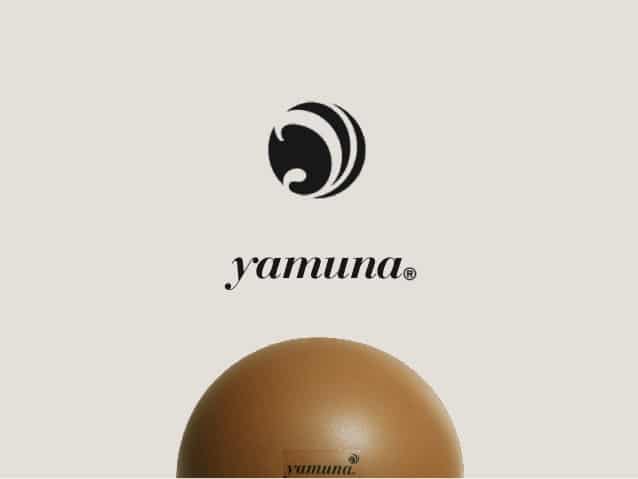

Being immersed in the fitness industry provides me with a ton of different opportunities to experience different techniques, methodologies, and products. I recently had the privilege of a...
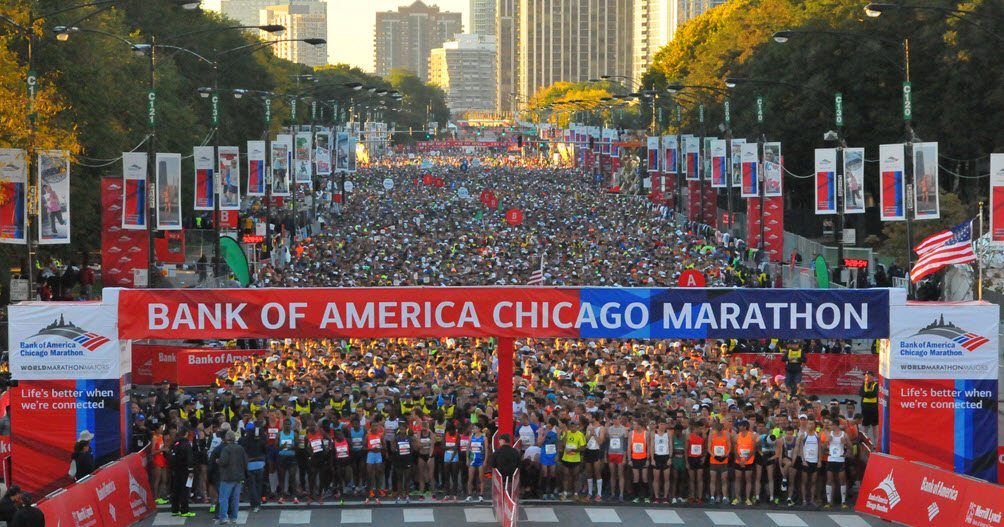
Leading up to the Chicago Marathon 2016 The Chicago Marathon provides an excellent course, plenty of support and, for me, a chance to visit home for a few days. It was no different for me this...
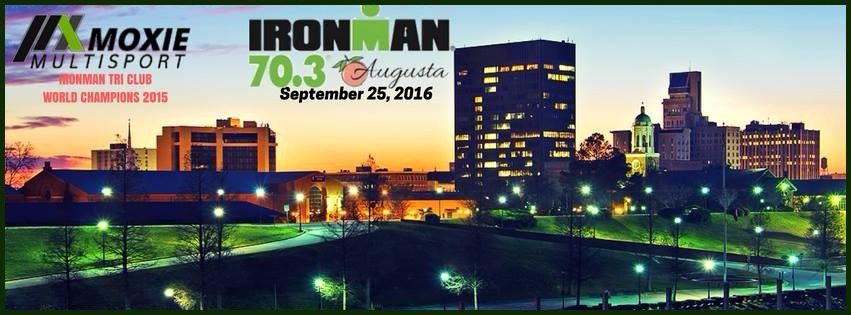
September 25 was going to be my day. The Ironman Augusta 70.3 triathlon was finally here. The race I had been training so hard for on one of my favorite courses. It was four-and-a-half months...
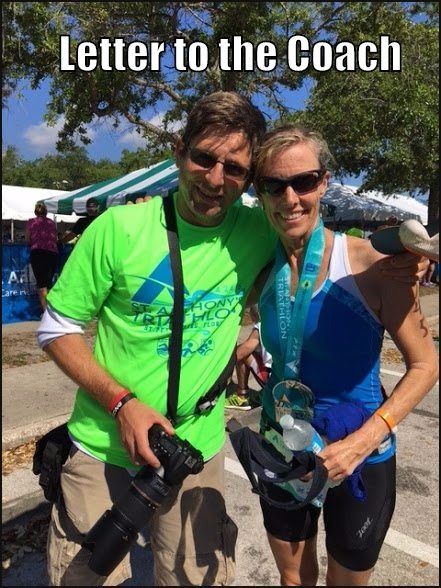
I have been an endurance coach for some time now. Once in a while, I receive an email from a client which chokes me up with pride. Today, I received one of those letters, so instead of sharing it...
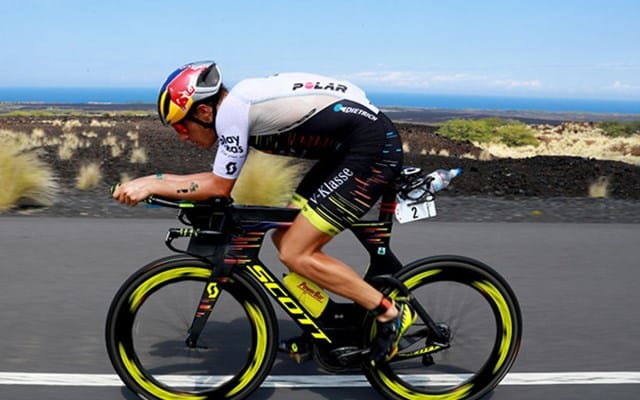
I found when looking for ways to get faster on the bike, is that there is so much information, from different coaches and experts, that it can be confusing and overwhelming. Personally, I...
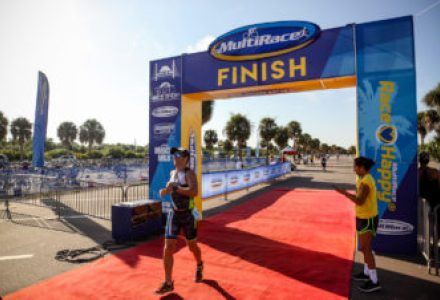
The previous post was a review of the FD3 Triathlon Series as if it was a product. Below you will find a more detailed account of my personal experiences during the race. Let me know in the...
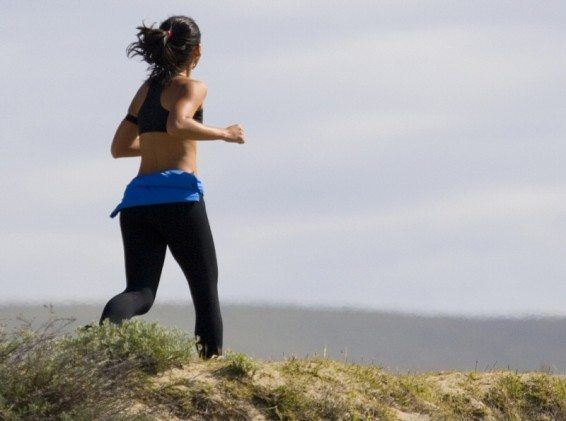
I can hear it now….”Know wonder they call you a Goof…you are crazy.”, “So, if I run slower I will get faster? You are out of your mind.” It was not to long ago I used to think the same thing, but as with everything I post, there are reasons and science to back it up.
Let’s face it, logic would dictate that pushing the pace of your easy days, as close to race pace as possible, would help you get fit faster and help you speed up, right? A lot of coaches, including myself, will tell you to run slow on your easy days, and easy days should be making up anywhere from 50-75% of your weekly mileage.
I have clients continuously asking me, “why are my easy days so slow?” The latest is my famous sit downs with my runners telling them to slow down after examining their data and finding them running tempo speeds during an easy day.
The answer to the question is what Arthur Lydiard and most other coaches would call the aerobic system. The aerobic system, or aerobic development, is the one of the most important fundamentals into unlocking your true potential.
Let us first check the stats on the energy contribution the aerobic system provides for races. As you can in the chart below, even the shorter events like the mile, over 80% of the energy required to run the race is produced via the aerobic system.
Aerobic training is the scientific fact that to move your body at higher intensities, the body needs to break down sugar and convert it to glycogen so it can be used as energy.
The aerobic system plus oxygen starts a chemical reaction known as Aerobic Glycolysis which continuously powers continuous endurance activities. In the aerobic system energy ATP is produced through Pyruvic Acid and Lipid/Protein fragments entering the Kreb Cycle and the Electron Transport Cycle.
Uh…what?
During aerobic respiration (yeah, that’s breathing) the body uses all the oxygen it needs to power the muscles. When you are running in your “aerobic zones” (easy runs), your muscles have enough oxygen to produce all the energy they need to perform.
See? Improving your capacity to transport and efficiently use all the available oxygen to produce energy will enable you to race faster since this makes up 85-99% of the energy needed to race.
Since running easy is aerobic development, what better way is there to train the aerobic system? There is none.
Capillary development – capillaries are the smallest of the body’s blood vessels and they help deliver oxygen and nutrients to the muscle tissues while exporting waste products out. The larger the number of capillaries you have surrounding each muscle fiber, the faster you can transport oxygen and carbohydrates to your muscles.
Aerobic training (easy running) increases the number of capillaries per muscle fiber, thus improving how efficiently you can deliver oxygen and fuel to your working muscles and how quickly they can clear waste products.
Myoglobin is a protein in the muscles that binds the oxygen that enters the muscle fiber. When oxygen becomes limited during intense exercise, myoglobin releases oxygen to the mitochondria to produce more energy.
The more myoglobin you have in the fibers of your muscles, the more oxygen is transported under aerobic stress. Like, uh, during a race. Aerobic training increases the amount of myoglobin you have in your muscle fibers.
Mitochondria are microscopic organelle found in your muscles cells that contribute to the production of ATP (energy). In the presence of oxygen, mitochondria breakdown carbohydrate, fat, and protein into usable energy.
Therefore, the more mitochondria you have, and the greater their density, the more energy you can generate during exercise, which will enable you to run faster and longer.
Aerobic training increases both the number and the size of the mitochondria in your muscle fibers.
Suffice it to say that aerobic development is the single most important factor to long-term development.
Of course, track workouts, VO2 max sessions, tempo runs and cross training will increase your fitness and are still incredibly important to racing faster. However, nothing will help improve continuously like developing the aerobic system.
Aerobic development is dependent upon running in your aerobic zones (for my runners Zones 1-3). This is why running faster on your easy days develop the aerobic system. Once you step out of those aerobic zones, on easy runs you diminish development of your aerobic system, but you also increase the chance for injury. Nope, two negatives do not make a positive in running.
This is one of the single biggest mistakes runners of all experiences make in their training.
As a coach and trainer I have always distinguished myself because I am always able to give my clients and readers the “why”. (Sometimes my clients end up telling me to just shut my mouth. when I am training with them because I am continuously telling them why they are doing each movement of an exercise or workout. I guess it may not be an advantage all the time. Go figure.)
Scientific research has been able to identify how the aerobic system adapts and responds to certain training paces. Physiologically we know:
It is pretty clear now right? Your optimal easy run pace for aerobic development is between 55 and 75 percent of your 5k pace, with the average pace being about 65 percent.
It’s also evident that running faster than 75% of your 5k pace on your long run has very little additional physiological benefit.
In fact, the research indicates that it would be just as advantageous to run slower as it would be to run faster. Running around half of your 5k pace is pretty easy right? Wouldn’t you know it, the evidence is clear that it still provides near optimal aerobic development.
Feel free to let me hear your feedback. I welcome any other case studies, personal experiences and other research as I am always learning. I provide you with the best content I can, but I have an open-mind and know that there may be other research out there that may negate information I post.
~IronGoof

One of the scariest things for a beginning triathlete, besides getting in the open water, is cycling. The first image that wandered into my head upon deciding to start seriously bicycling was of a that scary peloton. Those tight formations of bikes moving at ridiculous speeds, during the Tour de France, so close together that one wrong move could cause serious damage to my body or someone else. Scary right? Luckily, triathlon doesn’t allow for huge groups like that, as a matter of fact it isn’t even allowed. Whew!
Buying my first Bike
I didn’t have a lot of money when I first started in triathlon, and I also didn’t really know if I was going to like it. I spent a lot of time in bike stores drooling over the expensive bikes, while studying cheaper entry level bikes. Every bike store had a different angle they played. One would say, purchase the more expensive bike, gain more speed so when I improved I didn’t have to buy another bike. Another would tell me to buy the entry level but load it up with expensive components so I could ride faster, and when I wanted another bike, the components alone would warrant a good price, and of course that store would buy it back from me and give me a discount an another bike. Decisions, decisions what to do, what to do?
I researched different road and tri bikes online and in magazines, and while I was pretty sure I would enjoy triathlon, I decided on an entry level Canondale CAAD 9 road bike. I also included in my purchase, a pair of pedals, cleats, shoes and a helmet. The helmet was very important especially since I hadn’t actually rode a bike in over 10 years. Would I really not forget how to ride a bike? The answer to that my friends is YES. It is not a skill that is forgotten. It maybe a little unsteady the first couple of times, but not forgotten. Luckily I will have my trusty helmet, just in case.
I would enjoy triathlon, I decided on an entry level Canondale CAAD 9 road bike. I also included in my purchase, a pair of pedals, cleats, shoes and a helmet. The helmet was very important especially since I hadn’t actually rode a bike in over 10 years. Would I really not forget how to ride a bike? The answer to that my friends is YES. It is not a skill that is forgotten. It maybe a little unsteady the first couple of times, but not forgotten. Luckily I will have my trusty helmet, just in case.
I also read something that resonated with me. The most important thing that is needed after the purchase of a bike, is the fitting. At first I thought, “what? Don’t I just have to find the most comfortable height of the seat and then get going?” I had no idea that there are so many different adjustments on a bike, to a point that bike “fitters” actually have to be certified in order to properly fit you. They have to take courses, pass tests and be mentored. “Really?”, you ask? Yes…really.
The fitting took about an hour where they put my bike on a trainer, and with my shoes and bike shorts I pedaled, then the fitter took measurements and made adjustments to my seat post raising it and lowering it to a perfect dimension. Then he took angle measurements from the ground to my hip, knee and shoulder and from the pedal and a bunch of other places. He moved my saddle not only up and down by forward and back. He then took my handle bars and put different size spacers on the tube underneath my handlebars to find the perfect height and then was able to move them back and forth to find the right angle, height and most comfortable spot for me. I had no clue there was this much to it.
Pre-First Ride
As I left the store after my fitting, Jo-el, the general manager and friend from my track club, gave me some good advice. I had never rode in cleats and pedals before, where my feet were clipped into the pedals where they wouldn’t just simply lift up. I had to turn my heel so the cleat would unclip from the pedals so I could put my foot down. Jo-el said to take my bike in the house and put it between a doorway, and practice clipping and un-clipping from the pedals. Also, I needed to find the most comfortable side to unclip first and then stick to that side no matter what. I followed that advice in detail. I clipped, unclipped, clipped and unclipped till I was sure I had mastered it. Then I took a little ride around the block and practiced even more till I was confident I mastered at least that part.
I had a feeling of euphoria that first little trip in my neighborhood. I felt fast, free traveling under my own power on this brand new, tuned Cannondale bike. I was really excited for my first ride the next day in the hills of San Antonio.
The First Ride
I drove to San Antonio…Florida that is, with my brand new bike in the back, my new bike shorts on, bottles ready to put in their cages on the bike, coffee in my cup holder and classic rock playing on the radio. I remember having mixed feelings about this initial ride. I had never ridden in a group before, I had never ridden with these cleats and clips before, but I knew I was in good shape but was I fit enough? After that I just thought to myself, “if you cannot go as far then just turn around and head back. no big deal.”.
I met a friend at these ball fields and was mesmerized by the amount of bikers getting ready to take their morning ride. The sea of colors from the different bikes and jerseys was extremely overwhelming. That anxious feeling came back for a second until my friend mentioned we were riding with triathletes not pure cyclists. They would understand I was on my first ride and would help me out. After preparing for my first journey, we found our formation and began the trek.
I was surprised that I was staying in the middle of the pack and with minimal effort. The wind was in my face, I was pedaling under my own power and keeping up! It was an incredibly euphoric feeling. Unfortunately, when we hit the first long hill, euphoria turned to anxiety and then… embarrassment.
My pedaling slowed, and it became extremely hard to mash down on the pedals. With very minimal spinning of my legs I tried to switch to higher gear, but I actually ended up in a lower gear which made it even harder. When I did finally gear up, it was too late. I couldn’t move the pedals fast enough to switch gears, and my chain fell off , so I was at a dead stop. Of course I was so concerned about the gears I didn’t unclip out of my pedals, and I went down on my side. The only thing that really hurt was my ego as I stood my bike up and examined the chain. The group was passing me all asking if I was ok, and taking for granted that I was telling them I was fine and to keep going. By the time I had my chain back on the group was completely out of site. I pedaled like a bat out of hell hoping to catch up, but I missed a turn and ended up 10 miles out of my way, and lost.
To make a long story short ( I know, too late) one of the faster members of the group realized I was gone, backtracked, and finally found me asking directions at a convenience store. He led me back to the group and I finished the ride without any other issues, but I learned a lot of lessons that day.
Hints to get started in cycling straight from the Goof:
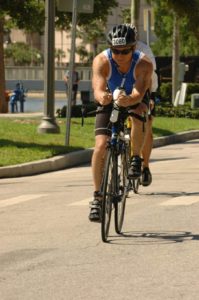
On my first bike after a couple of modifications
1. Buy an entry level road bike. This is usually an aluminum alloy frame. You don’t want a Wal-mart special, but you don’t need to start with the top of the line bike either.
2. Purchase a set of entry level pedals, cleats and shoes. The pedals usually come with the cleats and the bike shop will install them for you.
3. Purchase safety equipment. Biking shorts, and a helmet to start. I would also have a set of sunglasses as well. Not just to keep the sun out of your eyes, but it helps with the wind too. Make sure you also have at least one water bottle with a cage installed on your bike.
4. Get the bike fit for you. Have a certified bike fitter make those adjustments specifically for you.
5. Practice getting in and out of your cleats . Put your bike in a doorway, hold onto the frame and get in and get out of your cleats. Find the most comfortable side of the bike and then practice getting out of the cleats and putting your foot on the ground.
6. Take a short ride around your neighborhood and continue to practice getting in and out of your cleats. When seeing a stop or even a potential stop ahead practice just moving your heel just to the point where you unclip before stopping so you have a quick option that you can pull out of your clip to stop or return your heel to clip back in to keep going. Remember to always clip out and stand with the same foot first every time.
7. Understand your gears. While in that first ride, switch the gears on your right hand and find what lever takes you to a higher or easier gear, and which one brings you to a lower or harder gear.
8. Take your first long ride with friends and have some fun.
One last thing, you are going to fall. That is just the reality of it. You will get stuck in your cleats at some point and you will fall over, but it will be minimal. The trick is to accept it, get up brush yourself off, laugh at yourself, get back on your bike and have fun. It’s worth it I promise.

 My coaches all have always tried to instill in me the importance of a good night sleep. Especially as the intensity and duration of my workouts have been increasing. The issue for me is that I have a phobia of growing older. What does one have to do with the other? I always feel like I am wasting my life away by sleeping. Think about it. As athletes we all want to experience life to the fullest which is why we train and race. Sleeping is eight-ten hours of time we could still be experiencing life and what the heck are we doing but laying there. What a waste! Or is it?
My coaches all have always tried to instill in me the importance of a good night sleep. Especially as the intensity and duration of my workouts have been increasing. The issue for me is that I have a phobia of growing older. What does one have to do with the other? I always feel like I am wasting my life away by sleeping. Think about it. As athletes we all want to experience life to the fullest which is why we train and race. Sleeping is eight-ten hours of time we could still be experiencing life and what the heck are we doing but laying there. What a waste! Or is it?
With an anticipated two Ironman Triathlons on the horizon for me, I decided to dig a little deeper and find out what happens during sleep and what benefits it gives us. I am not talking about the regular answers that we hear all the time; “it recharges the body”, “muscles grow during sleep not during workouts”, yada yada yada. I am not going to bore anyone with the “What is Sleep?” lecture. We all received that in high school biology and health class. I am just going to hit the nitty gritty about why we as athletes may need more sleep, because that is what I wanted to know.
Hormones & Muscle
During our waking hours, the body burns oxygen and food to provide energy. This is known as a catabolic state, in which more energy is spent than conserved, using up the body’s resources. When we sleep we move into an anabolic state – in which energy conservation, repair and growth take over. Levels of adrenaline and corticosteroids drop and the body starts to produce human growth hormone (HGH).
A protein hormone, HGH promotes the growth, maintenance and repair of muscles and bones by facilitating the use of amino acids (the essential building blocks of protein). Every tissue in the body is renewed faster during sleep than at any time when awake.
Immune system
I have always heard that sleeping more when fighting infectious illness aids recovery. Getting enough sleep can also help resist infection, as some studies of healthy young adults have shown that moderate amounts of sleep deprivation reduce the levels of white blood cells which form part of the body’s defense system.
A killer of cancer called TNF – tumour necrosis factor – also pumps through our veins when we are asleep. Research has shown that people who stayed up until 3am had one-third fewer cells containing TNF the next day, and that the effectiveness of those remaining was greatly reduced. So that little factoid hit me over the head like a ton of bricks.
JUST as the world is governed by light and dark, human beings also have an inbuilt body clock called the circadian rhythm. The circadian rhythm regulates all the processes of the body, from digestion to cell renewal.
Body temperature
Body temperature falls throughout the night. By about the sixth hour of sleep it has dropped to about three degrees below the temperature it was in the evening. At the same time, our metabolic rate drops too which if you’re trying to lose weight may not be a good thing, but it serves a purpose.
The skin  The top layer of the skin is made of closely packed dead cells which are constantly shed during day. During deep sleep, the skin’s metabolic rate speeds up and many of the body’s cells show increased production and reduced breakdown of proteins.
The top layer of the skin is made of closely packed dead cells which are constantly shed during day. During deep sleep, the skin’s metabolic rate speeds up and many of the body’s cells show increased production and reduced breakdown of proteins.
Since proteins are the building blocks needed for cell growth and for the repair of damage from factors like ultraviolet rays, deep sleep may indeed be beauty sleep.
Digestive system
The body requires a regular supply of energy and its key source is glucose(sugar). This is constantly burned up to release energy for muscle contraction, nerve impulses and regulating body temperature. When we sleep, our need for these energy reserves is marginal so the digestive system slows down to a sluggish pace. The immobility of our bodies promotes this. Hence, the reason for not eating too late. The acid and enzyme levels have dropped to a point where food is not digested as quickly.
Maybe all those coaches were right. We produce HGH to repair muscles, our immune systems fight cancer and diseases, our skin repairs itself and our digestive system cuts out, so we do not need to burn any sugar. It sounds like I have been looking at this all wrong. I should be sleeping in order to extend my life. Can you say epiphany? (Hopefully you can say it better than I can spell it. It didn’t come up in spell check)
After all the reading on sleep I have completed, I am really tired. Maybe I ought to get some sleep.
Saturday was a phenomenal starting with watching a few of my girls PR at the Great Westchase 5k. The night before I was contemplating going or not going, being that my race was the next day and I should really just head to athlete check-in, get a little workout in and return to relax. I couldn’t keep away though. Just the thought of five of the ladies I coach at Fit2Run (my girls), having the ambition to run that morning, was enough that I just couldn’t stay away. I really wanted to be there for them and cheer them on.
They all looked a little surprised when I arrived, but in a good way, at least I hope in a good way. I was shocked at the amount of people that showed up being that I barely ever heard of this race. My girls, Sharon, Kim S., Molly, Sonja, and Donna were there and ready to rock and I even saw a few of them doing their prescribed warm-ups, which made me smile. With my camera in tow, I was happy to grab a few shots, but I knew I shouldn’t run with them, but deep down I wanted to.
After the gun went off I grabbed a few action shots and raced over to the 1 mile mark, but I missed a few of them, so I just hung out about three-quarters-of-a mile from the finish and waited. I grabbed photos of the women I saw, but I still ended up missing a couple. When Sonja came a long I saw a certain, not pain, but concern on her face, so I decided to jump in and bring her across the finish line. She is one of my projects, as she has been one of the few that continually asks questions, and genuinely wants to get better. I have even put a personal plan together for her to run the Best Damn Race Half-Marathon. She makes me so proud, as she continually gets better in more ways than one. I brought her in, egging her to push just a little more and increase her cadence and speed. She came across the line with a new PR and made this coach feel like the proudest papa ever. To increase that feeling even more, I found that all of my girls PR’d and Sharon by more than four minutes which is HUGE!!
We hung around a bit and checked out the expo before I said my good-byes and started my journey south to Venice, Florida in order to Attend the Check-in for my own race. The drive wasn’t bad from Oldsmar, around an hour-and-a-half, but it didn’t feel that long due to the radio blasting classic rock from 107.3 The Eagle. I love that station.
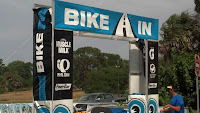 When I arrived I was surprised at the organization of the check-in. There were volunteers helping with everything to include parking. After I received my packet and got my athlete bracelet I was told to go get my timing chip in the next shelter. There stood two, large screen monitors with keyboards and little cameras at the top. The staff member brought up the application where it asked for my bib number and then had all of my information loaded. I verified it and then he coded a new chip and then took my picture. I was curious and asked him what the picture was for and he informed me that as I would cross a mat about 200 yards from the finish, my picture would come up on a huge monitor above the finish line. I was pleasantly surprised and excited about that. I would probably not see it myself, but just the thought already started my heart pumping for the race. I left that area and looked to my left and found a massage tent, and as I didn’t get a chance to see Lisa Jamison that week, I decided to check it out. I again was surprised when I was told by the volunteer that a massage pre and post race were included in the registration. They asked me what I was looking for and I told them I really just needed a good stretch and that is exactly what I got. Three LMTs all took turns massaging and stretching my legs, arms and shoulders out. This wasn’t some 20 minutes quicky rub down, this was a good 45 minute full-on stretch and it was awesome.
When I arrived I was surprised at the organization of the check-in. There were volunteers helping with everything to include parking. After I received my packet and got my athlete bracelet I was told to go get my timing chip in the next shelter. There stood two, large screen monitors with keyboards and little cameras at the top. The staff member brought up the application where it asked for my bib number and then had all of my information loaded. I verified it and then he coded a new chip and then took my picture. I was curious and asked him what the picture was for and he informed me that as I would cross a mat about 200 yards from the finish, my picture would come up on a huge monitor above the finish line. I was pleasantly surprised and excited about that. I would probably not see it myself, but just the thought already started my heart pumping for the race. I left that area and looked to my left and found a massage tent, and as I didn’t get a chance to see Lisa Jamison that week, I decided to check it out. I again was surprised when I was told by the volunteer that a massage pre and post race were included in the registration. They asked me what I was looking for and I told them I really just needed a good stretch and that is exactly what I got. Three LMTs all took turns massaging and stretching my legs, arms and shoulders out. This wasn’t some 20 minutes quicky rub down, this was a good 45 minute full-on stretch and it was awesome.
I caught up with Pete and Jaime after that and we all went over to get our SWAG bags, which by far was the best I had ever received. A Headsweats visor, Blue-Seventy goggles, samples of Power bites and a new Powerbar and very little paper all tucked in a drawstring bag labeled with Muscle Milk. The rest of the expo was pretty rudimentary, so we decided to head over to Sharkey’s for some lunch before the mandatory meeting.
The mandatory meeting brought on a surprise and a little fun. The race director notified that due to the rough water, and the possible Red Tide warning, that it was possible that the swim would be cancelled or reversed. What I haven’t mentioned as of yet, was that due to Hurricane Sandy, it was already very windy. The waves in the ocean looked angry and rough. One part of me was a little relieved, but it was outweighed by the side of me that was disappointed. I mean I should have been excited due to the swim being my worst event, but it just wouldn’t, and later didn’t, feel like a true triathlon if the swim was cancelled. I felt the last race of the season was going to be a huge disappointment without the swim, not to mention the high winds on the bike were also a concern.
At the end of the mandatory meeting there was a worst wet suit contest which was really entertaining. Six athletes went onstage with really ugly wet suits, some worn, some bleached and one of the custom made was really terrible. An athlete with this multi-colored, turquoise, purple, orange and black multicolored wet suit one by unanimous cheering and laughter by the athletes. The top two ended up winning brand new wet suits provided by Blue-Seventy which was kinda cool for them.
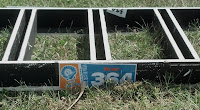 I was continually impressed with Rev3 when I visited transition. They didn’t have the rails that I was used to where the bike seat hooks underneath with just a little room to setup your bike and run gear, they had these wood boxes the ground that gave each athlete a sleeve where your bike tire was inserted allowing the bike to stand up on its own and the ease of removing it and returning it during the race, and a box for your gear and even more room between bikes. Not to mention the little of added extra of personalizing your spot with your bib number and name printed on the box.
I was continually impressed with Rev3 when I visited transition. They didn’t have the rails that I was used to where the bike seat hooks underneath with just a little room to setup your bike and run gear, they had these wood boxes the ground that gave each athlete a sleeve where your bike tire was inserted allowing the bike to stand up on its own and the ease of removing it and returning it during the race, and a box for your gear and even more room between bikes. Not to mention the little of added extra of personalizing your spot with your bib number and name printed on the box.
The rest of the night basically consisted of packing up my gear, changing an inner-tube on my bike and relaxing. Oh, I will say one thing that the race provided that was really cool; race tattoos. These are temp tattoos with my bib number for both arms and the back of my right hand and my age on the back of my right calf. They looked extremely professional and were a lot easier to apply than I thought. Peel, stick, wet with a wash cloth and peel the back off. Done. I didn’t know how complicated it was going to be, so I applied them Saturday night and slept in them, and they looked just as good at 4 am when I awoke.
 |
| Pete, Jamie and I before the race |
All of the athletes I knew had rented hotel rooms in Venice, but the ride was less than an hour, and I thought I would be better off sleeping in my own bed and having some solace time, prior to the race. I was very happy I made that decision. The ride down that early in the morning was easy and fast. I had plenty of time to rack my bike in transition and lay out my shoes and stuff before the race. As I walked up to transition I heard the announcer officially cancel the swim and proclaim the pros would have a 1.5 mile run prior to the bike but the age groupers would have a La Mond Time Trial start. While the disappointment came over me I was also curious about this time trial start as I had never had that experience before. Upon finishing I caught up with Pete and Jaime and socialized with them, Carola, Laurie, and some new friends we made.
 |
| Carola and I |
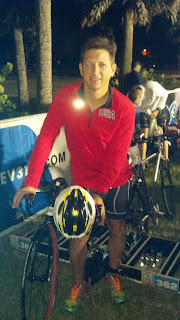
Finally, after the pros finished their run and started on the bike the officials lined us up in bib order and started us at the Swim In as if we just came in from swim. After the first athlete ran into transition they continued starting each athlete every 3 seconds. I was bib 364 which gave me a good 5 minutes in line before I finally was started. I ran to my bike, jumped into my shoes, put on my helmet, with clipping my chin strap, grabbed my bike and ran to the mount line. I registered 1:37 for T1 which was ok, being that I was at the far end of my row and far from the bike out line. The wind was howling the whole time on the bike, but luckily the first 25 miles or so had a great tail wind. I was keeping speeds of 25-27 mph with medium effort and was feeling pretty good, even with some of the more experienced bikers passing me like I was standing still. Even Pete caught me with his race wheels and flew by calling me to chase after him. I kept him in sight for a good 5-6 miles until I lost him, which just at the point we turned into the wind.
It was brutal. I never thought I could work so hard to reach speeds over 16 mph. That is all I ended up thinking. “No matter what I just can’t go below 16.” It is such an arbitrary number but it sticks with me for some reason. I just refused to go under it. Later on this might had led to another problem, but I will get to that in a minute. Around mile 40 there was relief of about four miles, but even that was quickly defeated by turning back into the 20 mph headwinds that plagued us all on the back half of the course. After mile 20 I wasn’t really passed again, however I was doing my fair share of passing which was nice ego boost. I caught up to Jaime who started 260 people in front of me and even Blaine who was ahead of me by 100 or so. I was feeling pretty good in that arena, but I just couldn’t catch Pete. I tried though.
When I got back into transition I was noticing a little pain in the arch of my right foot. I never felt that before, so I just shrugged it off, but when I returned my bike it’s sleeve in transition, and donned my running shoes, I felt this sharp pain in my foot like I was running with a nail stuck in the ball of my right foot. I seriously thought I somehow broke my foot. I left transition within 90 seconds only to end up sitting on the curb howling in agony at the pain in my foot. I took off my shoe, massaged it and started rolling it over the curb and the pain was so intense tears started welling up, and not just due to the actual pain, but for the brief thought I might DNF. I said to myself, forget it, I am going to finish this thing if I have to hop the 13.1 miles and crawl across the finish line. I put back on my shoe and started to run slowly. I was so relieved when the pain started to disappear. I didn’t quite have my legs after the bike, but at least my foot wasn’t broken and hopefully the pain would subside completely and soon.
Digressing back when I first entered transition, Pete yelled at me as he had just crossed the timing mat, to come and catch him. Well, even after hanging out for a bit, I caught him before the first mile marker. He was hurting pretty bad and I was hoping he was alright. We stopped for a minute to stretch and then we walked and then ran for a bit. Just about the first mile marker Pete cramped up really bad and he just shouted for me to go on and even after I doubled back to make sure he was all right, he shooed me away so I ended up back in familiar territory; alone or alone as one can be in a race with 500 athletes.
My legs were still a little stiff, but they slowly loosened up. When I hit the second aid station, I grabbed some water, but at the third station I walked through it grabbing water and Pepsi washing down a Honey Stinger gel along with it. Interestingly enough, I had just recently found that Coke or a cola of any kind, really helps during a triathlon run. Not as much in a fresh run, but in a triathlon it sends a bolt of sugar right to the glycogen stores and seems to give me this little lift, just enough to make me feel like I can push a little harder. Problem is, it is short lived, but combined with the right other source of sugar it can keep me going for at least a couple of miles until I hit another aid station. That ended up being my strategy. Walk through every other aid station grabbing water and coke(Pepsi) until I got to the last garbage can and they I started running again.
The run was two loops with this two mile, out-and-back concrete trail along a canal. That was the part I wasn’t happy about. First, it felt like it would go on forever and second it was concrete and I could feel the impact. I adjusted the best I could by lifting my knees and landing as softly as possible, but it just wasn’t enough because I could feel it in my legs at times. On the long canal trail I saw Jaime on my left after the turn-around, and it didn’t seem like she was that far behind me and then I passed by Blayne who was looking really strong. They both inspired me to push a little harder. I was feeling stronger at the start of the second loop so I started to lean from my ankles a little more and raise my cadence. The second loop seemed a lot shorter than the first, not that I wasn’t terribly thrilled when I saw a sign “Half Mile to Go”. I powered through that last 800 meters passing two other athletes in my age group. About 100 meters prior to the finish line I heard in a huge booming voice, “And from Tampa Florida, Brad Minus coming down arms wide looking like a champ.” I was ecstatic, exhausted and in a lot pain. The pain in my legs was terrible. I knew it was a soreness from the race, but it was a pain a little more intense than normal. A handler walked me through as I was awarded my finisher medal and handed a Gatorade and a water, making sure I was stable. After I assured him I was fine he took my chip, told me congratulations and pointed out the amenities for the finishing athletes. I wanted to wait for Jaime, but I knew if I didn’t get someone to work on my legs before I cooled down entirely I was going to be in even more pain later, so I headed for the massage tent.
I didn’t have to wait long til I was lead to a table where a Chiropractic student named Marceia, worked me over. In other races and even while watching some of the other volunteer massage therapists work over other athletes I usually see a cookie cutter approach to working on athletes. Meaning, like an assembly line, athletes are brought in each one is worked on in the exact same way. I only say Marceia work on the athlete prior to me and I was wondering if it was going to be the same way. I was so delighted when it wasn’t. She continued to ask me about my soreness and pain levels as she worked on me, and she was even using the same techniques that Lisa uses with me and even better, she did nothing to me that was even similar to the athlete prior to me. This woman had instincts and they were good ones. When I got off the table I was still a little sore but I felt 90% better. Thank you Marceia wherever you are.
I heard Jaime cross while I was waiting and by the time I finished my massage I saw Pete from a distance come across, so we were all in at this point. Chris and Fallon had come to watch and pleasantly surprised me by staying for the entire race. I am so impressed with Revolution 3 and everything they had available. It was actually possible to cross the finish line and walk right over to the results tent, type in your bib number and immediately check all of your splits, and since it was web based anyone who is tracking an athlete was able to receive real-time information. The very second an athlete crosses a timing mat, anyone in the world could see the time if they are on the web page. The last few Ironman races I have either watched or competed in, my followers have told me the lag could have been up to an hour after the split was crossed.
 |
| Jamie, Pete and I afterwards |
After, some pics and some socializing we checked our times and awesomely found that Jaime had placed in her age group. While looking at the computer it looked as though she had taken third, but when she was actually called for second place during the awards ceremony. Congrats Jaime!
I ended up breaking the 5 hour mark at a final time of 4:59.13 with 2:49 bike and a 2:06 half marathon, so I was happy with my performance. If there was a swim, I probably would have come in right around the same as Augusta, and I was glad for that.
This ends my triathlon season. I am in the midst of planning my off season and I have already titled it, S3F. Speed, Strength, Swim & Flexibility. I plan on working on my speed on the bike and the run, adding some endurance strength especially in my back and arms in order to increase speed in the water, doing more work in the pool on my form to try and relax and reduce my time in the water and increase my flexibility to protect my back and lengthen my stride and stroke. I am planning on competing in Tough Mudder in December with the A-Train, probably doing the Clearwater Marathon and maybe a couple of other short races just to keep my edge a little, before the first race of my season which at this point will be St. Anthony’s in April 2013.
If you have been following this goofy blog then you probably read in the post “State of the Goof” that I currently coach new runners to their first 5k race. I also mention that there is no other feeling like the emotion I get from watching my runners cross the finish line.
Today was no different. A couple of my runners had mentioned the Lowry Park Zoo Run because it looked like a lot of fun, so by a majority vote we decided to adopt that event as our culmination run. Others may call it an assessment run, because it is the final after the course. It is the race to see if the coaching and training was successful. I am here to say that to those whom participated, it was extremely successful. Just writing this I am getting excited remembering the faces on these women and the strength I saw as they fired over the timing mats at the finish line. What a feeling!
 |
| The last workout before the Zoo Run |
Some of these runners had trouble with the very first workout which is a 5 minute walk followed by a 3 minute run, another 5 minute walk, a 2 minute run, completing with a final 5 minute walk. Now here they are 10 weeks later running a 5k (3.1 miles) straight without stopping. What an improvement. Barely 3 minutes to over 30 minutes in 10 weeks and hopefully having fun running it. (At least I hope.) I tell my students in the beginning that I have four goals for the coarse;
I also tell them that in my opinion that until a person can run at least three miles straight that they cannot make an educated opinion on if they actually like to run or not. At the end of the course I expect one of three things to happen;
 |
| Linda – 1st place AG |
Today I had 10 runners whom all crossed the finish line. Each one of them PR’d (Personal Record) whether it was their first record ever or if they did complete a 5k in the past. I am absolutely ecstatic about their successes. I had one of my women finish first in her age group of which we all stayed to watch her get her medal. Four of my runners were top 10, two of which were top 5, but mostly everyone finished strong, with no injuries and with smiles on their faces.
I started the course with twenty-three new runners and through attrition of work, family, lack of motivation for some reason, I ended with around fourteen of which only nine of them were available for this date. Either way, I am super proud of my team. This is my favorite day every ten weeks. It is obvious that they all still have different fitness levels and speeds so they do not finish together, but I get so excited that I end up running almost double the course running back and forth to encourage them, and I love it.
 |
| My Champions after the Zoo Run |
My favorite way to go about this is to take the first two miles of the course and run back and forth between the fastest runners and the slowest runners, pacing along side each one to keep them motivated. When the fastest of the runners hits the last mile I try to be there to run with them through the finish line which usually means I am highly encouraging them to sprint to the finish line. After crossing myself, I head backwards through the course and start catching the other runners and I run them in as well until I get to my last athlete which by that time the rest of my group is waiting at the finish line cheering him or her in. Today was no different and I had a blast doing it.
FYI, just for shiggles – my time was around 30:10, but I had 4.25 miles already logged by that time.